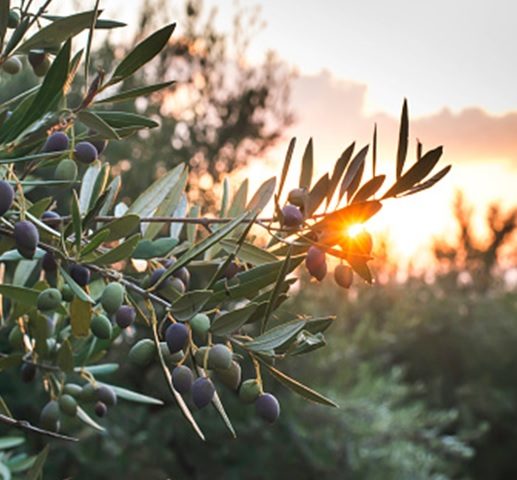Greek edibles olives are among the most popular olives in the world. They are known for their distinctive flavor, firm texture, and high quality. Some popular Greek edible olives include Kalamata, Green, Amfissa, Olives for Heroes, Thassos and Cracked.
Fermenting olives is a traditional method of preservation in Greece. The process involves soaking the olives in water to remove their bitterness and then fermenting them in a brine solution. The fermentation process can take several weeks to several months, depending on the type of olives and desired flavor. Here is how fermentation is done for some popular Greek olives:
- Kalamata olives: They have a strong flavor which ranked them at the top. They mature on the tree. Their bitterness removed in brine. They turn into a dark purple when they reach maturity and 100% Natural fermentation.
- Green olives: Collected green from the tree. Fermented and remove the bitterness with the Spanish method.
- Amfissa olives: Amfissa olives are typically dry-cured in a salt and vinegar mixture for several months. They are often flavored with oregano, lemon, and/or garlic.
- Olives for Heroes: They have much flesh in a caliber of 70-90 olives/ kilo. Fermented in brine (sea salt and water).
- Thassos olives: They are a popular variety of Greek olives that are grown mainly on the island of Thassos. They ripen and lose their bitterness on the tree. We collect them after they are sun dried directly from the tree.
- Cracked olives: Those olives are a Mediterranean tradition for a thousand of years. They are cracked by hand or stone.
In our products you will find a wide variety of olives and specifically Kalamata, Green, Black and Green natural, Sundried Thassos, Olives for Heroes and more.
We provided:
- Pitted, whole, sliced, halves, wedges olives.
- Stuffed green olives with 100% Natural ingredients (no with paste and preservatives).
- Marinated olives.
Greece is one of the largest producers of olive oil in the world, and its extra virgin olive oil is highly prized for its rich flavor, fruity aroma, and high nutritional value.
There are different categories of Olive Oils:
–Extra virgin olive oil is the category with the highest quality. From an organoleptic point of view, it has no defects and is fruity. Its acidity level must not exceed 0.8%. It comes from the first juice of the olives only, using mechanical procedures.
At this category you can also find:
–Organic extra virgin olive oil. Organic extra virgin olive oil is extracted from fresh, ripe olives without the use of chemicals or artificial additives, making it a pure and natural product.
–Unfiltered extra virgin olive oil. It is oil that has not undergone filtering before bottling. It is unprocessed, and as such, retains much of the original olive fruit pulp and sediment.
–Unfiltered organic extra virgin olive oil. It is produced from olives that have been grown without the use of synthetic fertilizers, pesticides, or herbicides and it has not undergone filtering before bottling.
Greek extra virgin olive oils are regulated by the European Union, which imposes strict standards to ensure the highest quality. Look for labels that say “PDO” (Protected Designation of Origin) or “PGI” (Protected Geographical Indication) to ensure authenticity.
–Virgin olive oil may have some sensory defects but at very low level. Its acidity must not exceed 2%. It comes from the second pressing of the olives, using mechanical procedures.
The different categories of olive oils are graded according to quality parameters, relating to:
–Physico-chemical characteristics, such as the acidity level, peroxide index, fatty acid content and sterols composition.
–Organoleptic (sensory) characteristics, such as the fruitiness and the absence of organoleptic defects.
The following categories are not suitable for direct consumption and are processed further in the industry after being tested for their physico-chemical characteristics only.
-Lampante olive oil is a lower quality virgin olive oil with an acidity of more than 2%, with no fruity characteristics and substantial sensory defects. It is refined to obtain the following 2 subcategories
-Refined olive oil is the product obtained after the refining of a defective virgin olive oil (lampante olive oil for instance). It has a degree of acidity up to 0.3%. You can find on retail shelves as “light olive oil”.
–Pure olive oil composed of refined olive oil and virgin olive oils is an oil resulting from the blending of refined olive oil with extra virgin and/or virgin olive oils. It has a degree of acidity up to 1%.
–Crude olive-pomace oil: the olive-pomace is the residual paste obtained after the oil is extracted from the olives. This is refined to obtain the following categories:
-Refined olive-pomace oil: crude olive-pomace oil can be refined.
– Olive pomace oil resulting from blending refined pomace oil with extra virgin and/or virgin olive oils its degree of acidity is below to 1%.
We offer 100% Greek Extra Virgin Olive oil from regions of Peloponnese and Crete, stored safely in inhouse tanks with controlled temperature and inert gas, keeping the oil fresh as on the first day.
Specifically, you can find:
-P.G.I. and P.D.O.
-Unfiltered
-Organic
We will be waiting for you at our stand at the Anuga exhibition, 07-11 October 2023, to taste these unique flavors from our olives and extra virgin olive oil.
HALL: 11.2
STAND: G030
Don’t miss it!



